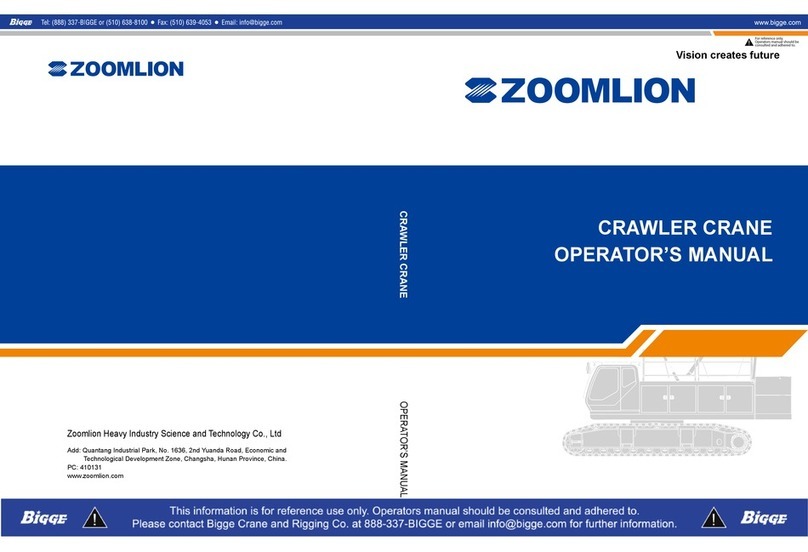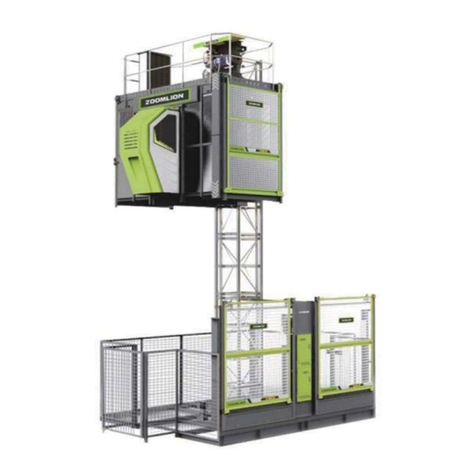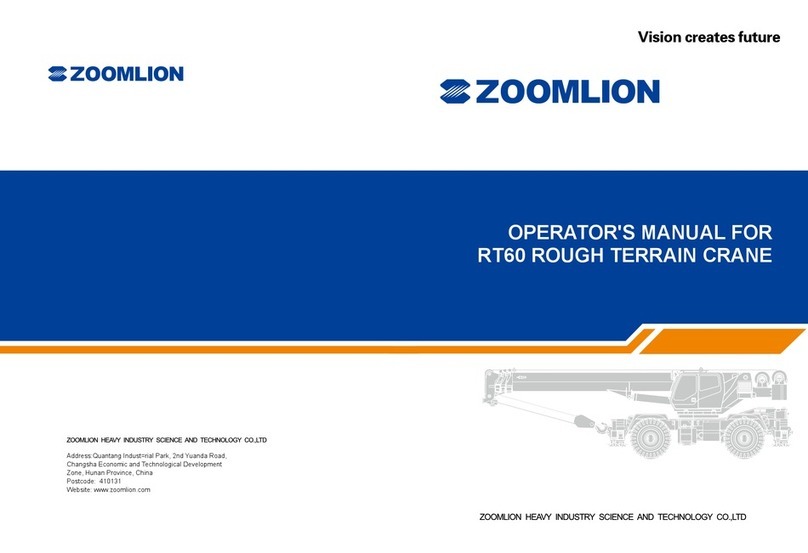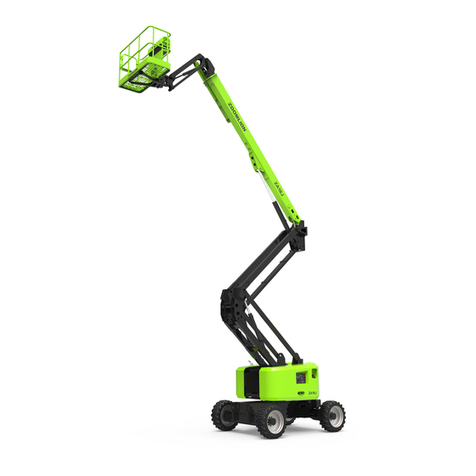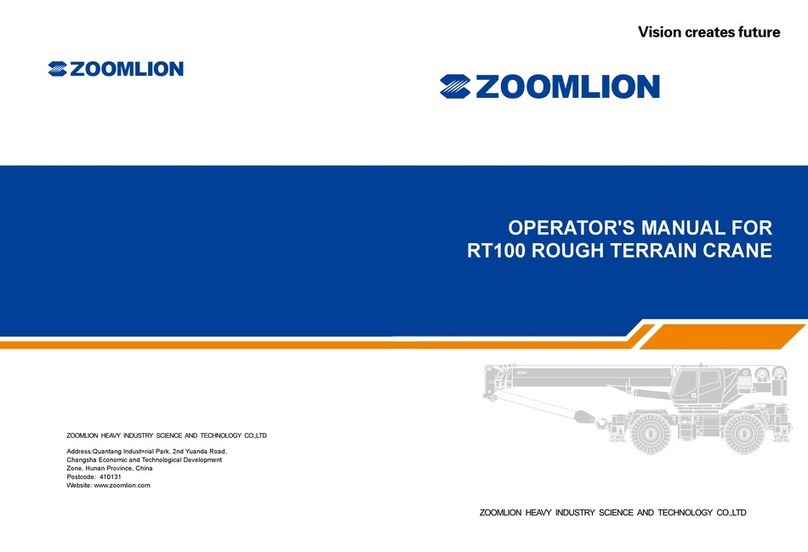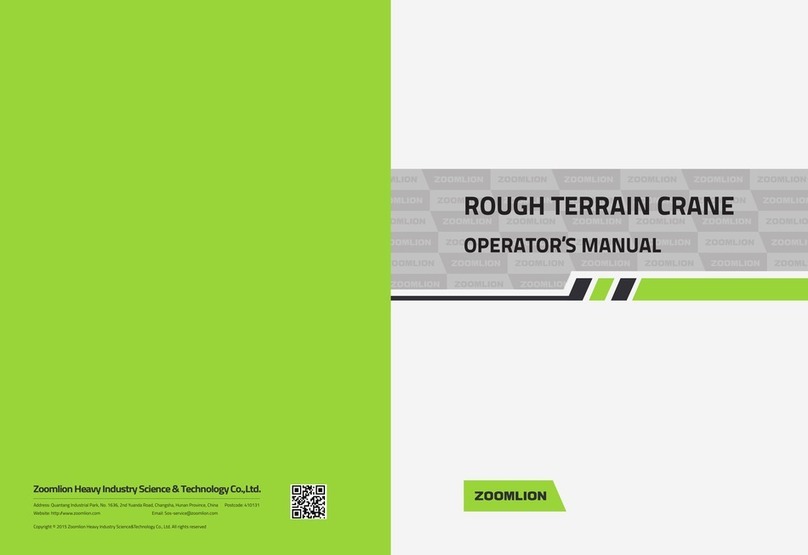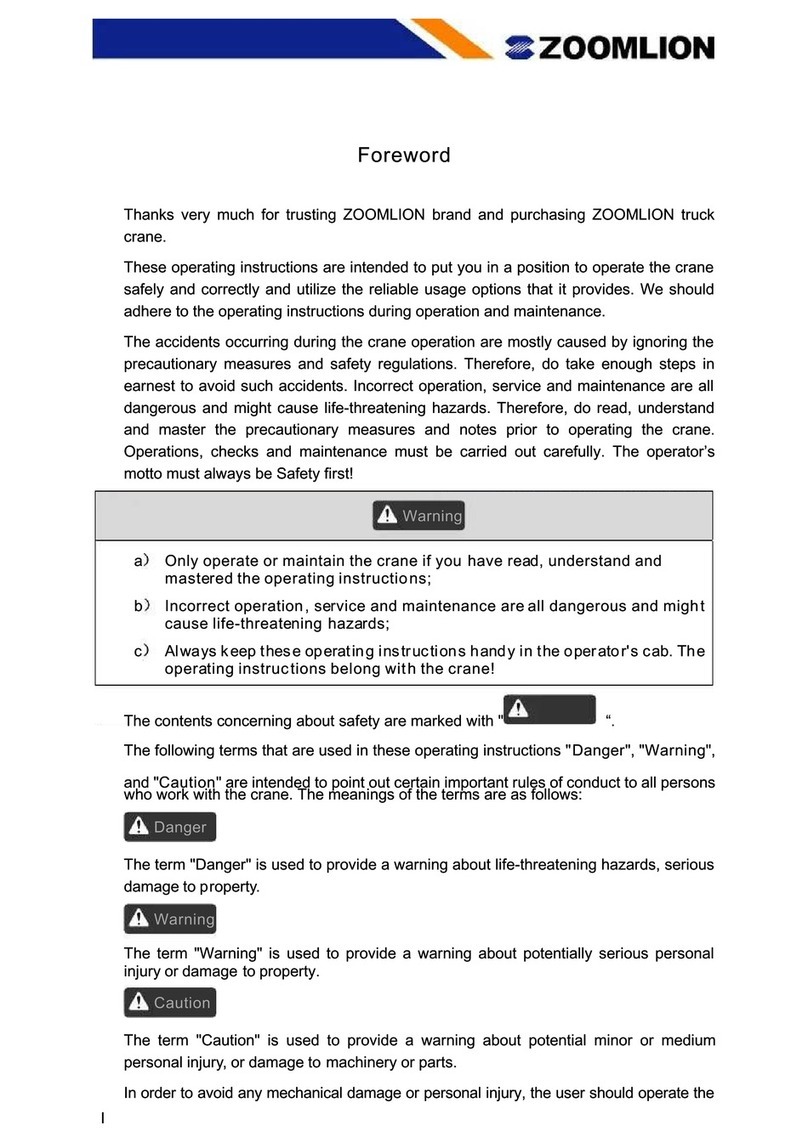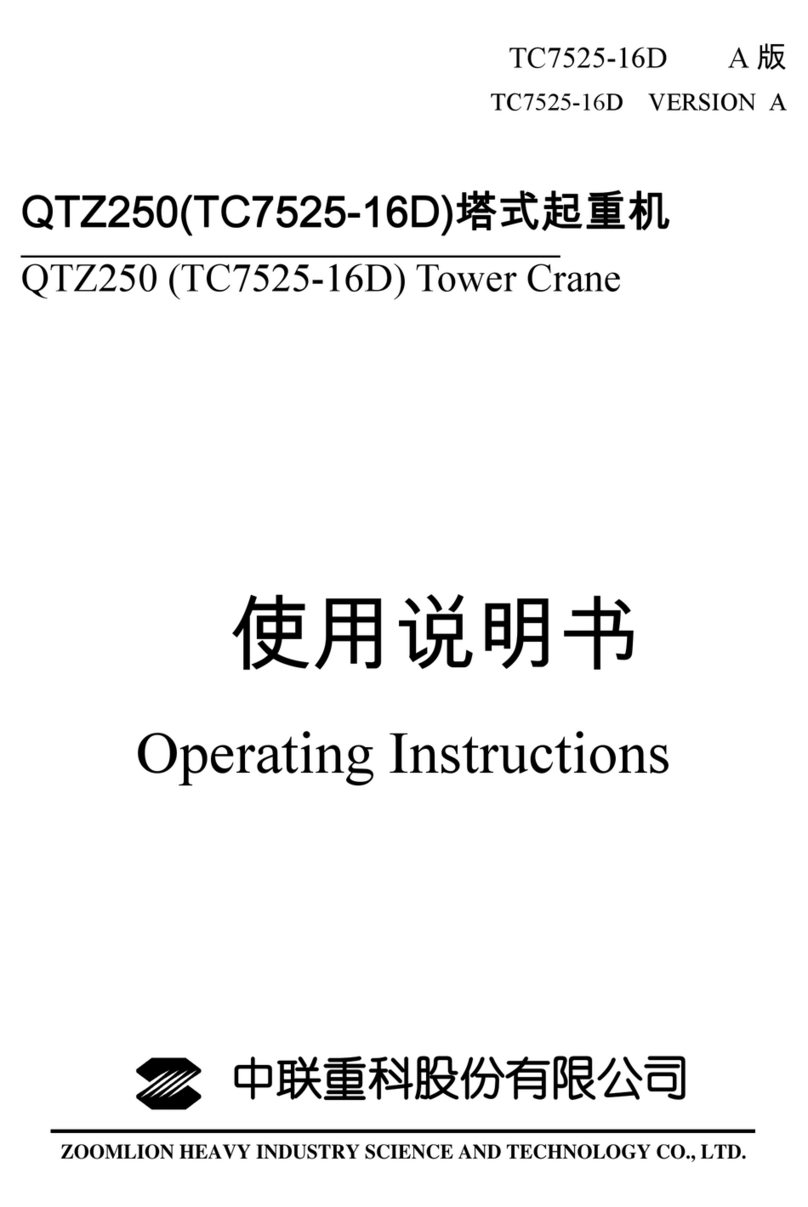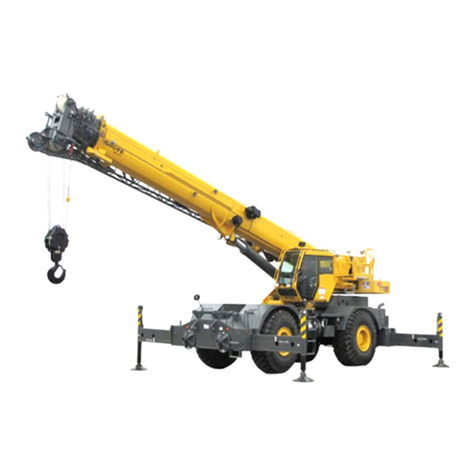
Operator’s Manual for Crawler Crane
Chapter 4 Crane Operation
4.1 Operating and control instruments ...................................................................................4-1
4.1.1 Operator’s cab, overview......................................................................................4-1
4.1.2 Left control box.....................................................................................................4-3
4.1.3 Right control box...................................................................................................4-4
4.1.4 Control panel assy................................................................................................4-6
4.1.5 Right control panel................................................................................................4-8
4.2 Instruction for digital display system...............................................................................4-11
4.2.1 Load moment limiter...........................................................................................4-12
4.2.2 LCD screen of parameter monitor......................................................................4-12
4.3 Startup of the crane........................................................................................................4-18
4.3.1 Adjustment of crane operator’s seat...................................................................4-18
4.3.2 Checks before startup ........................................................................................4-21
4.3.3 Turn on power supply.........................................................................................4-22
4.3.4 Start the engine ..............................................................................................4-24
4.4 Safety devices ................................................................................................................4-25
4.4.1 Emergency stop button.......................................................................................4-25
4.4.2 Battery master switch.........................................................................................4-25
4.4.3 Load moment limiter...........................................................................................4-26
4.4.4 Boom angle indicator..........................................................................................4-29
4.4.5 Derrick limiter......................................................................................................4-30
4.4.6 Lowering limiter ..................................................................................................4-31
4.4.7 Hoisting limiter....................................................................................................4-33
4.4.8 Support cylinder locking device..........................................................................4-34
4.4.9 Relief valve.........................................................................................................4-34
4.4.10 Anemometer.....................................................................................................4-34
4.5 Crane operation..............................................................................................................4-35
4.5.1 Operation of travel gear......................................................................................4-39
4.5.2 Operation of crane winches................................................................................4-45
4.5.3 Operation of synchronizing A-frame and main boom derricking winch and
synchronizing reeving winch and working winch ...........................................................4-57
4.5.4 Operation of slewing mechanism.......................................................................4-60
4.5.5 Simultaneous operation......................................................................................4-63
4.5.6 Operator’s cab movement-controlling mechanism.............................................4-77
4.5.7 Auxiliary remote control box...............................................................................4-80
4.6 Rope reeving ..................................................................................................................4-86
4.6.1 Heavy duty boom (S)..........................................................................................4-88
VI

